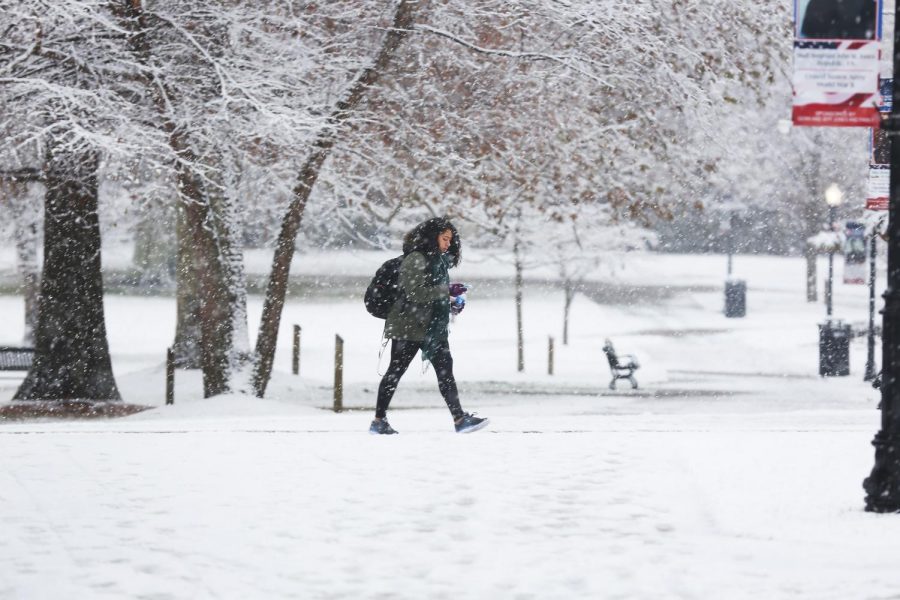“World cities and the geography of tourism” among courses to be available for Cal U’s Winter Term 2021
FILE: Finals week at Cal U. Snow falls over the campus quad on Tuesday afternoon, Dec. 13, 2016.
November 18, 2021
The course 205 “World Cities and the Geography of Tourism” will be available to students online over winter break to advance their studies in tourism.
Although it’s an elective, this course counts toward the Tourism & Hospitality management major or the 18-credit minor in Tourism studies. The course is worth three credits and will run from December 13-January 12.
Susan Ryan, professor of Tourism Hospitality and Event Management, said the course is about places that people visit through tourism activities, like going on vacation and allow students to expand their understanding of the industry through a global context.
“It will examine the supply and demand characteristics of Australia, New Zealand, Oceania, the Caribbean, parts of Northern Africa, and North America,” Ryan said. “Even though the course is optional, it allows majors to apply the concepts they learn in their major to different geographical settings.”
Kierra Pocetti, a senior majoring in Tourism, Hospitality, and Event Studies, said tourism itself is the study of the movement of people and the consumption of places.
“The key to tourism is understanding your destination, why people enjoy it, what they may be looking for in terms of experience, and what will draw them back,” Pocetti said.
World Cities and the Geography of Tourism is made up of five learning units, structured over a five-week period. Although the course is asynchronous online, the recommended pace of completion is one unit per week. Each unit has a series of look, listen, read, and watch activities, and the units end with a unit quiz. The course itself ends with a final exam as the culminating assessment activity.
Ryan said tourism is the world’s largest industry and is the top driver of the economies in New Zealand, Australia, and the Caribbean, which offers a diverse range of socio-economic, political, and geographical contexts to explore, compare, and contrast.
Pocetti said tourism is fundamentally a geographical phenomenon and there’s a problem in that there is no standardized development process. The course will explore what some of these developmental processes are.
“We need to know how to properly maintain a location as well as take care of places that originally weren’t intended to be tourism destinations but became ones,” Pocetti said. “It’s because it will help those locations in the long run.”
Ryan also said the course will also cover some world-renowned urban destinations such as Sydney, Cairo, and New York City.
“They’re so full of diversity and things to do, the only question someone could ask when visiting is ‘where do I start?’” Ryan said. “Each one is unique and should be talked about more.”
Ryan said since it’s an elective that’s also open it to all majors, the fall and spring semesters are needed for a regular rotation of required Tourism, hospitality, and event management courses.
“Students can use the winter session to get caught up or ahead with their 120 credit undergraduate course requirements,” Ryan said. “An elective like this can fit perfectly into that student need.”
Ryan said students would have a better learning experience being in person at those tourist locations as “traveling is the world’s best educator,” but they’ll make do being at home.
“It’s a general elective that is a flexible, interesting, and compelling way to earn three credits in five weeks,” Ryan said. “It would be nice to at least let our minds escape somewhere warm over the winter break.”







